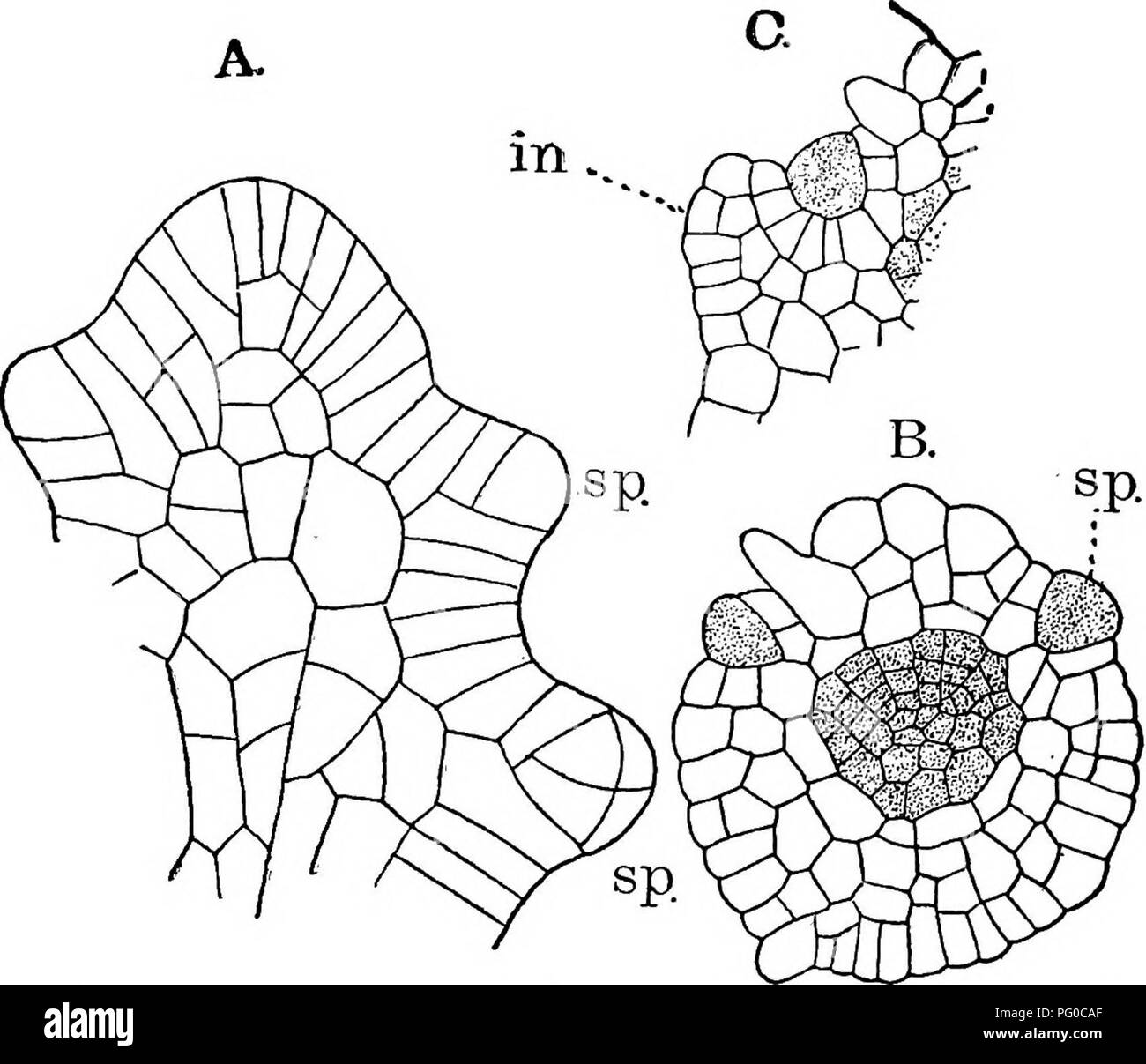. The structure and development of mosses and ferns (Archegoniatae). Plant morphology; Mosses; Ferns. 3S8 MOSSES AND FERNS CHAP. any distinct lamina. The fertile leaves are pinnately divided. In other species, e. g., S. dichotoma, the leaves are dichoto- mously divided, but the fertile leaf-segments are pinnate, as they are in 5". pusilla (Diels (i)). In Aneimia (Fig. 225) the two lower pinnae of the sporo- phyll are fertile, and in most species become very long-stalked and more divided than the sterile pinnae. The leaves arise from the dorsal side of the rhizome and in Lygodium, Prantl (

Image details
Contributor:
Central Historic Books / Alamy Stock PhotoImage ID:
PG0CAFFile size:
7.1 MB (274 KB Compressed download)Releases:
Model - no | Property - noDo I need a release?Dimensions:
1705 x 1465 px | 28.9 x 24.8 cm | 11.4 x 9.8 inches | 150dpiMore information:
This image is a public domain image, which means either that copyright has expired in the image or the copyright holder has waived their copyright. Alamy charges you a fee for access to the high resolution copy of the image.
This image could have imperfections as it’s either historical or reportage.
. The structure and development of mosses and ferns (Archegoniatae). Plant morphology; Mosses; Ferns. 3S8 MOSSES AND FERNS CHAP. any distinct lamina. The fertile leaves are pinnately divided. In other species, e. g., S. dichotoma, the leaves are dichoto- mously divided, but the fertile leaf-segments are pinnate, as they are in 5". pusilla (Diels (i)). In Aneimia (Fig. 225) the two lower pinnae of the sporo- phyll are fertile, and in most species become very long-stalked and more divided than the sterile pinnae. The leaves arise from the dorsal side of the rhizome and in Lygodium, Prantl (5) states that they form but a single row. He also says that the. Fig. 226.—A, Apex of a young, fertile leaf-segment of Aneimia PhylUtides, X200; B, transverse section of young fertile leaf-segment of Schisaea Pennula, Xioo; C, part of a similar section of a somewhat older leaf, Xioo; sp, young sporangia; in, indusium. (All figures after Prantl.) roots are always diarch, like the Polypodiaceae, but gives no further details of their growth or structure. The Sporangium The development of the sporangia has been carefully in- vestigated by Prantl (5) and in origin and arrangement they differ decidedly from the other Leptosporangiates, but approach most nearly Osmunda, and among the eusporangiate Ferns. Please note that these images are extracted from scanned page images that may have been digitally enhanced for readability - coloration and appearance of these illustrations may not perfectly resemble the original work.. Campbell, Douglas Houghton, 1859-1953. New York, The Macmillan Company;